Fishing Treasures from the Deep

After undergoing careful restoration, including cleaning, stabilization, and desalination, a batch of precious cultural relics recovered from the deep sea was presented to the world on September 27 at a special exhibition of archaeological discoveries from the No. 1 and 2 shipwrecks on the northwest continental slope of the South China Sea.
The cultural relics on display slept 1,500 meters beneath the waves for more than 500 years, only being discovered in October 2022 on the northwest continental slope of the South China Sea about 150 kilometers away from Sanya City in Hainan Province.
The China (Hainan) Museum of the South China Sea, in collaboration with China’s National Center for Archaeology and the Institute of Deep Sea Science and Engineering of the Chinese Academy of Sciences, organized and implemented three rounds of underwater archaeological surveys from 2023 to 2024, completing preliminary detection, detailed survey, and extraction of the cultural relics from the shipwrecks.
This is the first time that Chinese underwater archaeologists have conducted systematic and scientific archaeological surveys, records, and research on ancient shipwreck sites located at a depth of over 1,000 meters. They recovered 928 (sets) of underwater cultural relics, including porcelain, metal objects, and logs from the "midnight zone," a semi-deep-sea zone where sunlight barely penetrates. The successful exploration and recovery of the relics fully demonstrate the interdisciplinary integration between China's deep-sea technology and underwater archaeology and indicate that the country's underwater archaeology endeavors have reached an advanced level by international standards.
The No. 1 and No. 2 shipwreck sites on the northwest continental slope of the South China Sea are relatively well preserved, holding many cultural relics with relatively defined historical periods. More than just a major discovery in China's deep-sea archaeology, the range and number of relics make this a world-class discovery. The relics fill gaps in the narrative of China's ancient South China Sea navigation routes and are an important witness to the trade and cultural exchanges along the ancient Maritime Silk Road.
When these relics were brought to the surface, cultural relics protection workers got to work, employing various scientific and effective protection measures. Utilizing advanced techniques, they carried out detailed processing of the relics, restoring the original appearance of the cultural relics to the greatest extent possible. In doing so, they were able to preserve crucial cultural and historical heritage that can go on to tell China's story well.
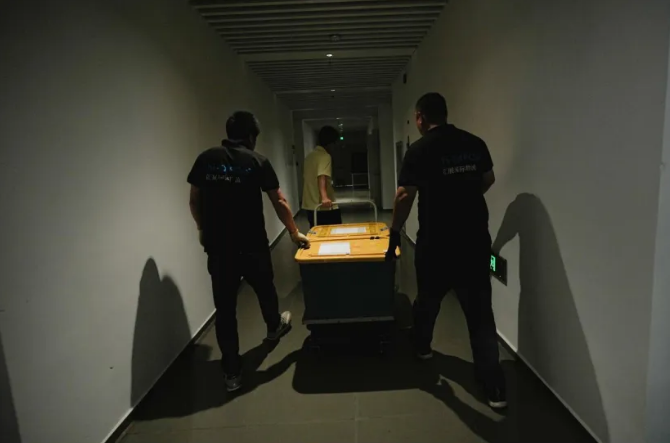
June 2, 2024: Staff transport cultural relics unearthed from the No. 1 and No. 2 shipwreck sites on the northwest continental slope of the South China Sea to the Deep Sea Cultural Relics Protection Laboratory of the China (Hainan) Museum of the South China Sea. (Photo: Zhang Mao / Hainan Daily)
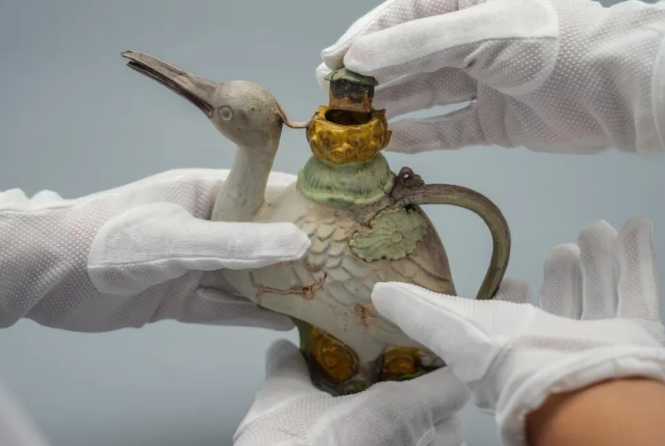
September 25, 2024: Cultural relic protection staff delicately handle a Ming Dynasty tricolor egret-shaped jug unearthed from the shipwreck sites on the northwest continental slope of the South China Sea. (Photo: Zhang Mao / Hainan Daily)
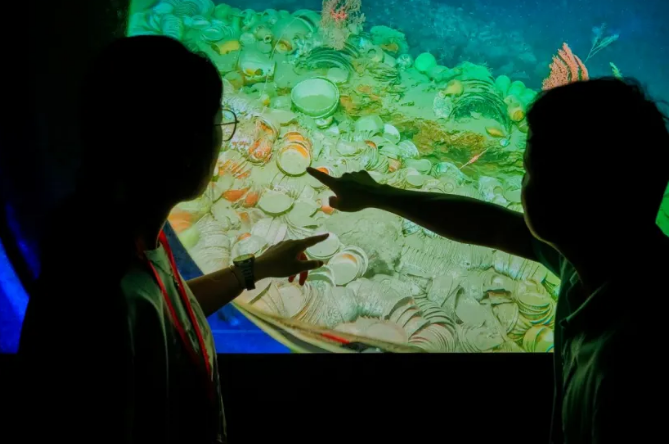
September 26, 2024: Archaeologists Dong Jiaxin (left) and Wang Wanfeng explore the layout of cultural relics among the No. 1 shipwreck on the northwest continental slope of the South China Sea. (Photo: Zhang Mao / Hainan Daily)
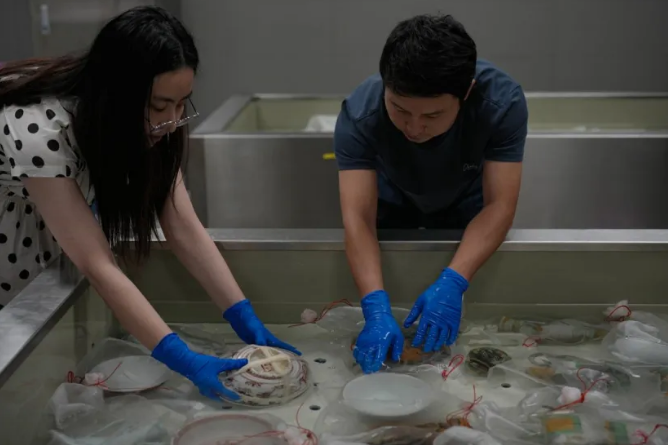
June 28, 2024: Staff members Chen Zihan (left) and Wang Wanfeng conduct desalination and immersion of cultural relics for classification in the Deep Sea Cultural Relics Protection Laboratory of the China (Hainan) Museum of the South China Sea. (Photo: Zhang Mao / Hainan Daily)
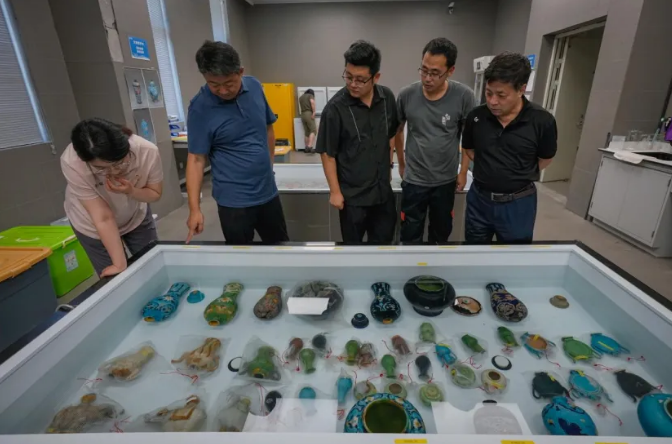
June 2, 2024: Staff observe the desalinated and immersed cultural relics that have been divided by classification in the Deep Sea Cultural Relics Protection Laboratory of the China (Hainan) Museum of the South China Sea. The desalination and immersion process is one of the important steps in protecting and restoring cultural relics recovered from the ocean. (Photo: Zhang Mao / Hainan Daily)

August 17, 2023: Staff members Wan Xin (right) and Xue Yawei remove the remaining mercury inside a large Ming Dynasty blue and white porcelain jar with story patterns at the Deep Sea Cultural Relics Protection Laboratory of the China (Hainan) Museum of the South China Sea. Cleaning is one of the main steps in protecting and restoring ceramic cultural relics. (Photo: Zhang Mao / Hainan Daily)

August 17, 2023: Xue Yawei, a member of the team at the Deep Sea Cultural Relics Protection Laboratory at the China (Hainan) Museum of the South China Sea, cleans a porcelain jug. (Photo: Zhang Mao / Hainan Daily)
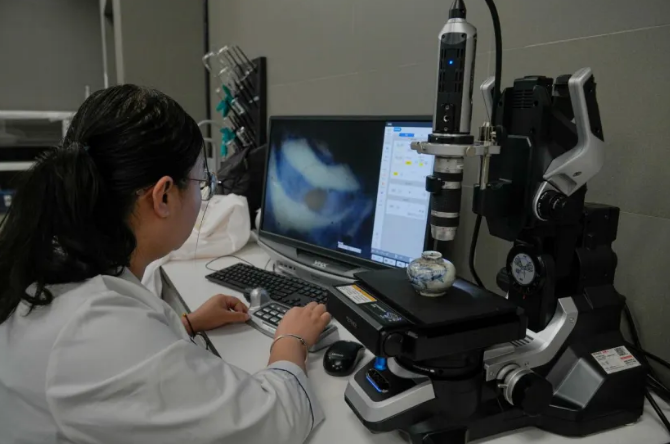
August 17, 2023: Staff member Li Yuan used a large depth-of-field microscope to observe the damage to the glaze of a Ming Dynasty blue and white porcelain jar at the Deep Sea Cultural Relics Protection Laboratory of the China (Hainan) Museum of the South China Sea. (Photo: Zhang Mao / Hainan Daily)
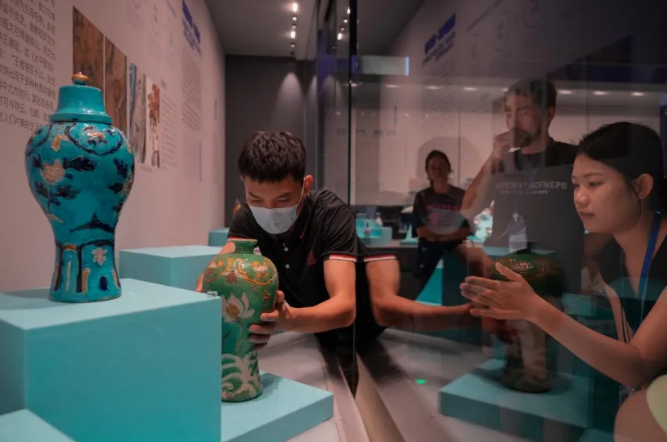
September 26, 2024: Staff tweak the placement of cultural relics about to go on exhibit in exhibition hall 6 on the third floor of the south area of the China (Hainan) Museum of the South China Sea. (Photo: Zhang Mao / Hainan Daily)

September 29, 2024: Visitors stopped to admire the cultural relics unearthed from the No. 1 and No. 2 shipwreck sites on the northwest continental slope of the South China Sea in exhibition hall 6 on the third floor of the south area of the China (Hainan) Museum of the South China Sea. (Photo: Zhang Mao / Hainan Daily)

Office of the Hainan Free Trade Port Working CommitteeNo. 69 Guoxing Avenue, Meilan District, Haikou City, Hainan Province, 570203, China

hnshgb_xchch@sina.com
Contact Us
- Latest News
- Video News
- Specials
- Press Release
- Upcoming Events
What's New in Hainan
- Industrial Park
- Tax
- Trade
- Investment
- Entry & Exit
- Finance
Invest in Hainan
- Weather
- Transportation
- Health Care
- Attractions & Food
- Fitness & Sports
- Arts & Culture
Live in Hainan
- Copyright © 2020 Hainan Free Trade Port
- Qiong ICP 19005356
- All Rights Reserved







